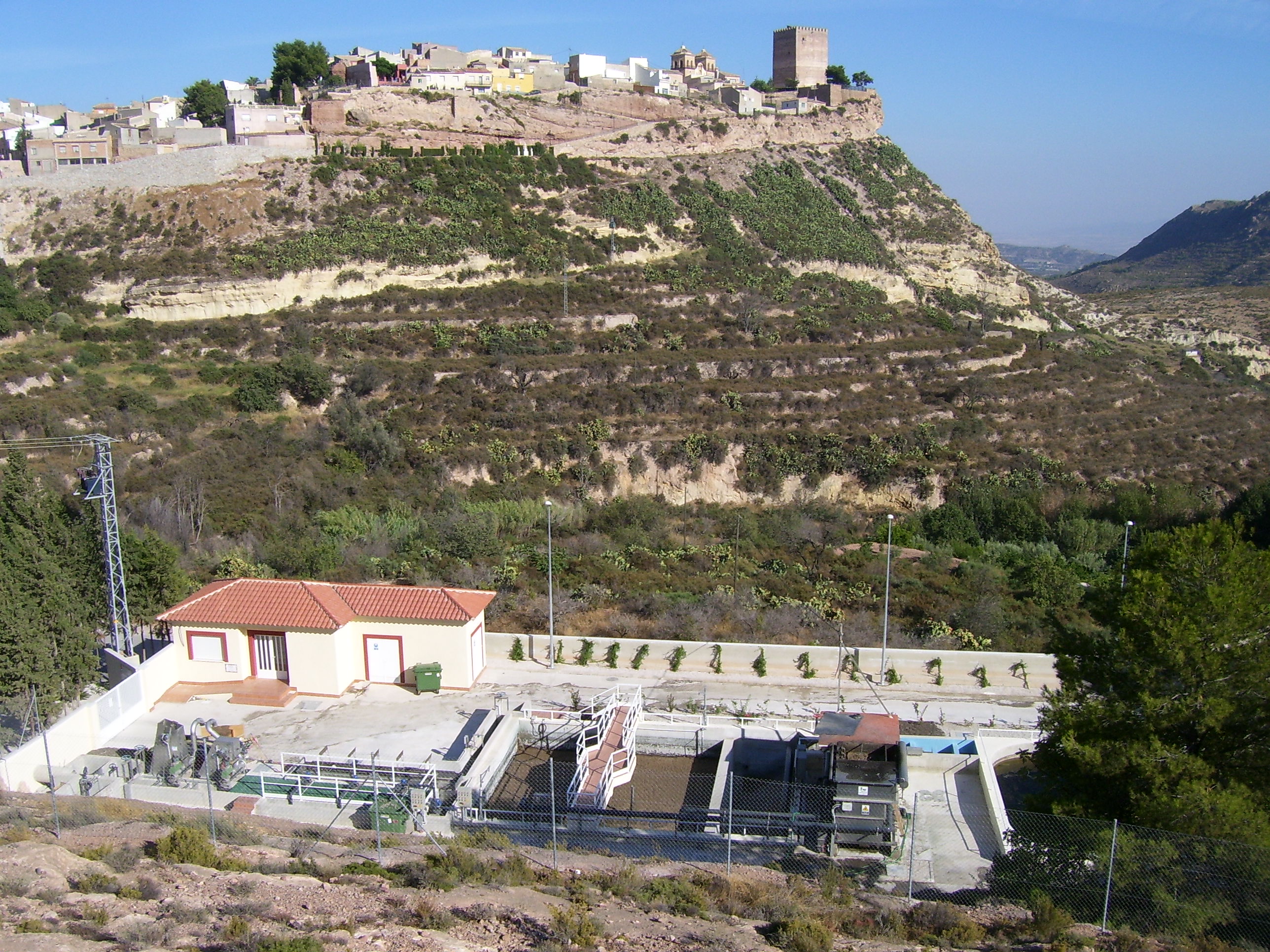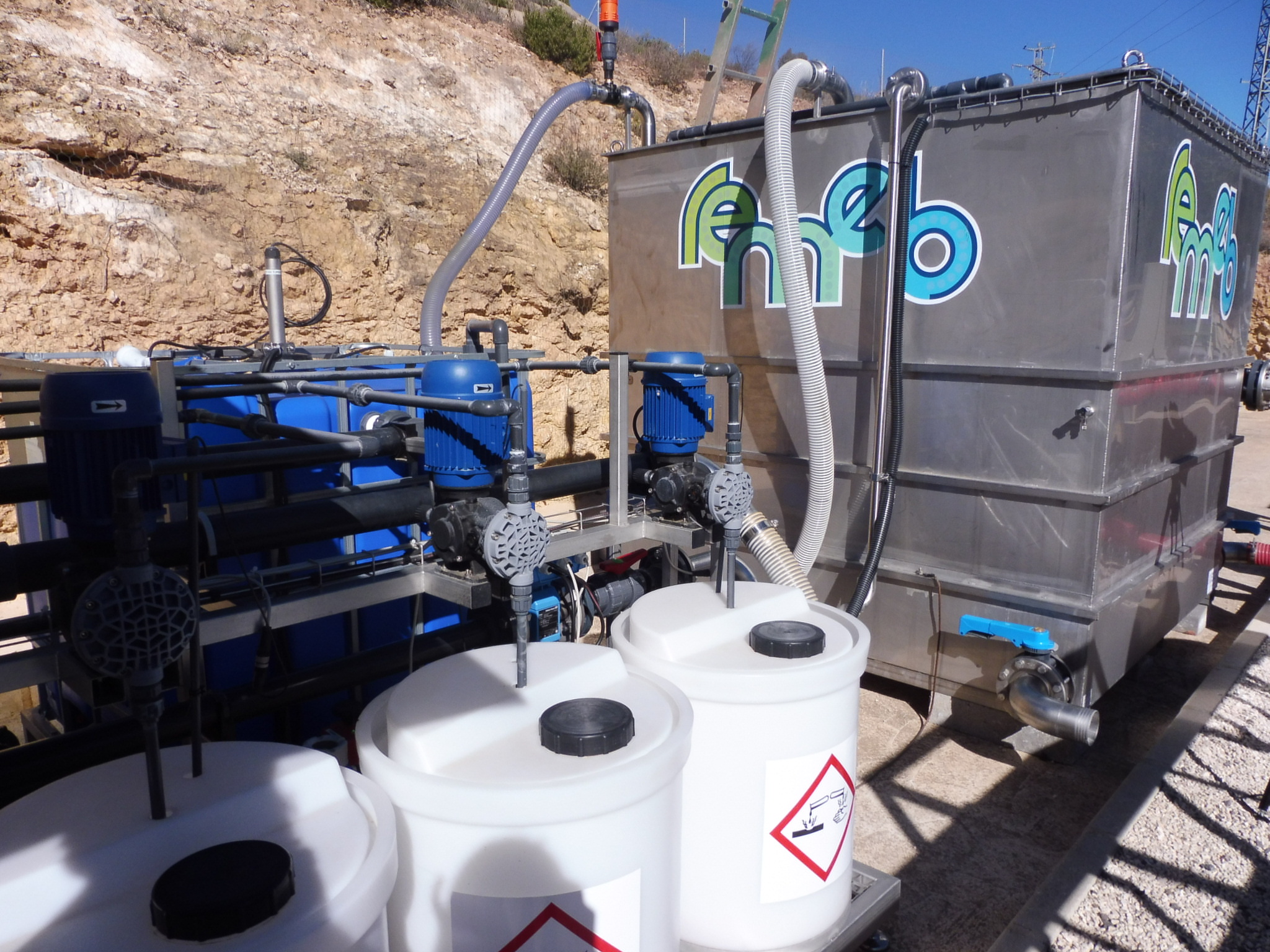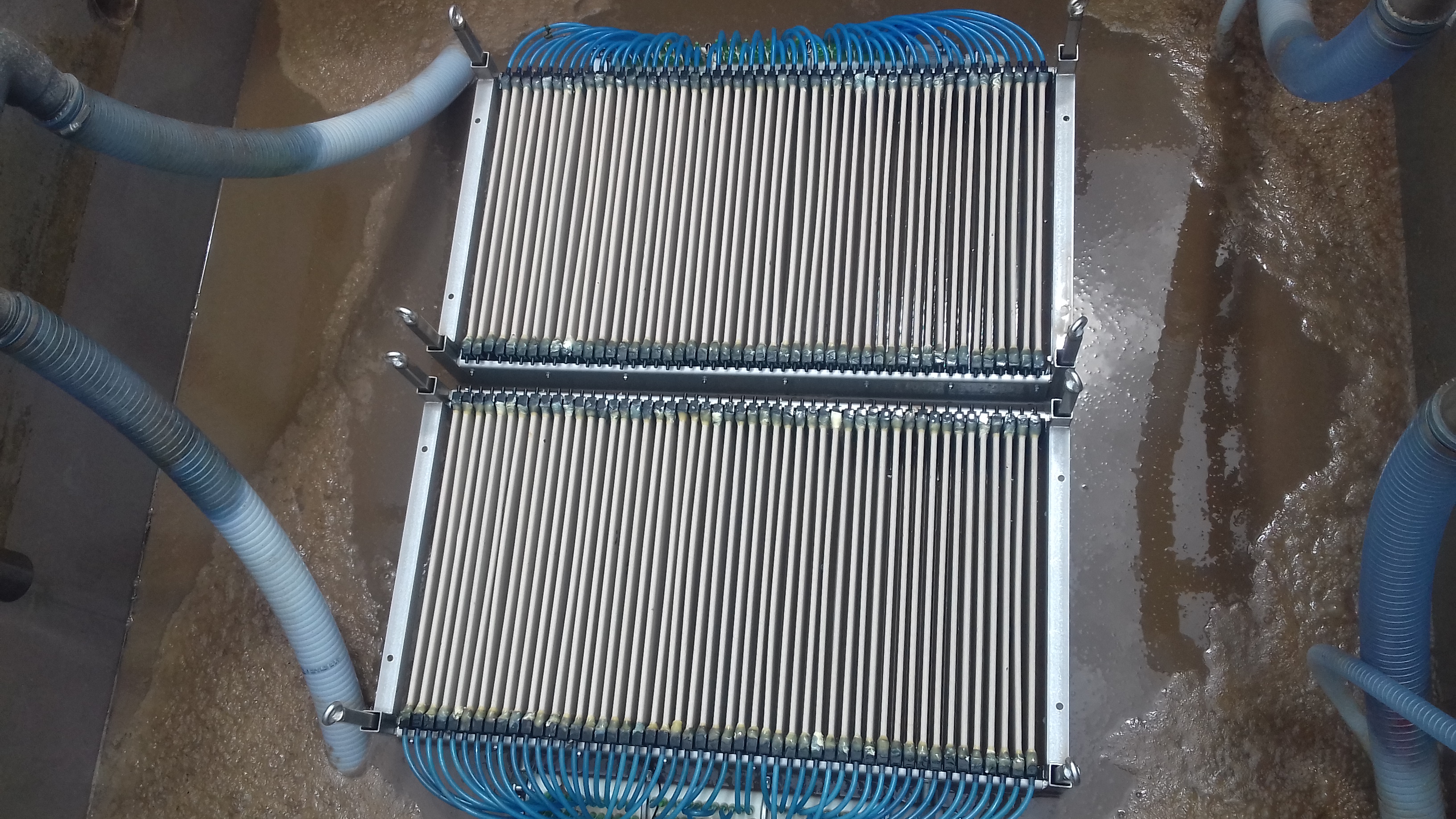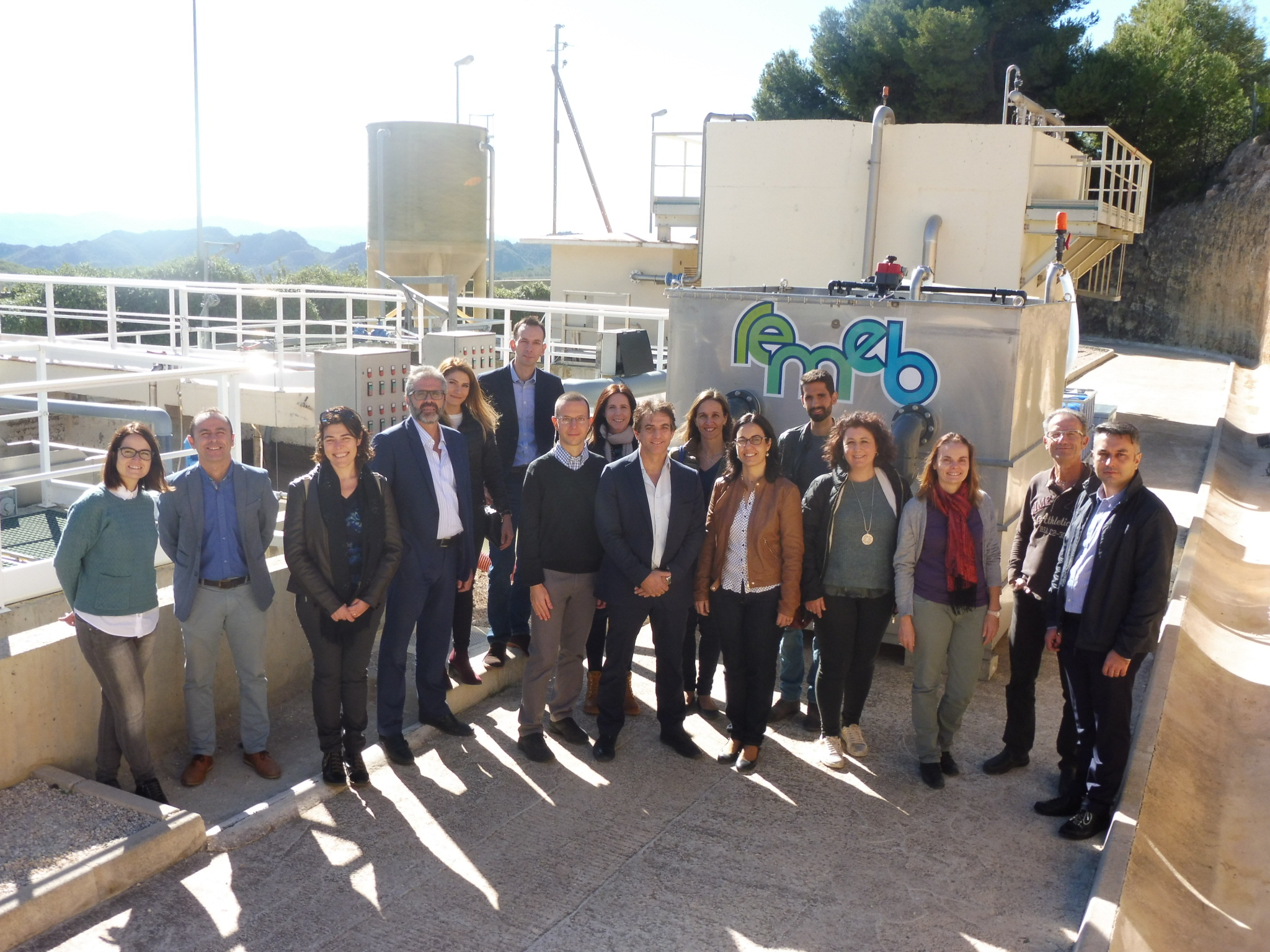



According to the European Commission, only 2.4% of treated urban wastewater in the EU is reused every year. A three-year EU-funded project by the REMEB consortium set out to change that with a membrane bioreactor (MBR) made from low-cost ceramic membranes.
In southern Europe, reclaimed wastewater is reused predominantly for agricultural irrigation and for urban or environmental applications, while in northern Europe, the uses are mainly for urban or environmental applications or industry. As the effluent standards for municipal wastewater treatment plants tighten, water authorities are investing more in technologies for wastewater treatments, which can drastically enhance the effluent quality and bring new opportunities and possibilities for reusing the effluent; for example, in the recovery of humid zones, street cleaning and recreational use as well as in agriculture and industry.
MBR & wastewater
Wastewater treatment using an MBR is currently one of the most advanced technologies for wastewater treatment, but decision-makers have been reluctant to implement this over alternative processes, because MBRs are often considered high-risk and prohibitively costly.
The REMEB project, which began back in 2015, looked at changing this and creating a low-cost MBR. It has been funded by the EU’s research and innovation programme, Horizon 2020, which covers areas related to climate change, the environment, the efficiency of resources and raw materials through the promotion of the reuse of wastewater, and the development of new, sustainable products.
Low-cost membranes
The main objectives of the REMEB project were the development, implementation and validation of a low-cost recycled ceramic MBR for the reuse of water in wastewater treatment plants. The project proposed a new type of MBR which significantly lowers initial and running costs of the technology, compared to MBRs made from organic membranes or with conventional ceramic membranes. The ceramic membranes used in the REMEB MBR are low-cost because they are made with waste materials, in addition to the typical raw materials used in the ceramic tile industry. Instead of the commonly used pure ceramic oxides (alumina, titania or zirconia), the materials used in this project are based on residues and byproducts obtained in agricultural and industrial processes, such as olive stones, marble powder, and chamotte from fired tile scrap.
Recycled waste
The REMEB MBR used ceramic membranes instead of polymeric ones, which are most commonly used in the industry. Although polymeric membranes are considerably cheaper than ceramic membranes, they are not as effective in extreme atmospheres and have a shorter life cycle. Ceramic membranes have better chemical, thermal and mechanical resistance, are more robust and last longer, but they are often considered prohibitively expensive.
However, the introduction of recycled materials in the ceramic membranes makes a big difference to the total cost of the MBR, reducing both initial and running costs. Different waste products were introduced into the membrane composition to achieve the suitable porosity and plasticity. Olive oil wastes, chamotte from fired tile scrap and marble powder were used in this project but there are many other waste products produced in other European areas by different processes that could also be incorporated into the composition of the membrane.
The membrane’s costs are reduced because of the lower cost of waste products, when compared with natural or synthetic raw materials. In addition, there is an environmental benefit because waste products which previously had to be sent to landfill, can be reused landfill waste is reduced. The waste is mainly generated by industrial or agricultural processes and is included in high proportions in the composition of the membranes.
Initial development
Initially, the low-cost ceramic membranes were developed with local raw materials and wastes in Castellón (Spain), a province on the Mediterranean coast, with a long tradition of ceramic tile manufacturing. Then, they were replicated on a pilot scale in Italy and Turkey, two areas which are also well known for their ceramic production, by using recycled materials and waste material found in their own countries.
The consortium
The REMEB project consortium was composed of a multidisciplinary team of 11 partners from academia, industry and public administration, from Spain, France, Cyprus, Norway, Italy, Turkey and Colombia. A range of expertise and skills were required for the development of the eco-friendly ceramic MBR, from the conception, the manufacturing and the implementation, to the monitoring and communication of the results.
The project was led by FACSA, a Spanish water cycle management specialist based in Castellón, which also validated the REMEB MBR when it was installed at the wastewater treatment plant in Aledo. In the project’s first phase, the membranes were manufactured on a pilot scale in the laboratory of the Spanish Institute of Ceramic Technology (ITC-UJI) and, once the optimum composition was detected, they were manufactured by real-scale extrusion by the Castellón tile company, Natucer, with the support of the Institute of Ceramic Technology.
French water filtration specialists, IMECA Process, designed, manufactured and installed the bioreactor in the planned location in close collaboration with FACSA. The Turkish and Italian ceramics centres, Centro Ceramico and SAM, reproduced the ceramic membranes with local waste from both countries to confirm that they could be replicated on an international scale.
Aledo WWTP
FACSA and ESAMUR, sanitation and wastewater treatment specialists for the Murcia region and another consortium partner, carried out the validation of the REMEB MBR system when it was installed in the wastewater treatment plant in Aledo, in Murcia. The area is known as the orchard of Europe because its economy is largely based on agriculture. It was chosen because it is one of the regions with the greatest drought levels in Spain and so it is one of the leading areas in the country when it comes to the treatment and reuse of wastewater.
In addition to this, Aledo WWTP is already working with an MBR system, using flatsheet organic membranes. The plant can treat municipal wastewater in both reactors, working in parallel. This means that it has been possible to compare the two MBRs (organic membranes vs. low-cost ceramic membranes) and their behaviours in real conditions.
The effluent of both MBRs has been periodically analysed and the results have shown that the quality of REMEB’s permeate meets the requirements of the Spanish regulation for the reuse of treated wastewater. IPROMA, another member of the consortium and an accredited, environmental studies test laboratory in Castellón, carried out the analysis.
ATLANTIS Consulting in Cyprus, also part of the consortium, carried out the analysis for the replication and exploitation of the results obtained during the project, and the Norwegian company, BIOWATER Technology, another consortium member, prepared a business plan for the commercialisation of the REMEB MBR. Another partner, the Antonio Nariño University in Columbia has studied the potential for the implementation of technology in Colombia and other countries in South America. Although Colombia has sufficient water resources, the quality is poor because of high levels of pollution. Finally, the Valencian Region Council of Chambers of Commerce was in charge of communicating information about the project across the world.
The REMEB technology could be implemented in municipal WWTPs throughout the world where higher treatment capacity is required. However, the REMEB ceramic membranes can be also implemented in the industrial sector, with great potential in high water consuming sectors such as food and beverages and chemical, to regenerate wastewater in their industrial processes.
After three years of work, in 2018, the REMEB project consortium successfully achieved its goals and the Council of Chambers of the Valencian Community, set about communicating the successes of the project both locally in Spain and internationally. The project had successfully developed and validated a sustainable and competitive MBR, it had reduced the costs of the MBR technology and manufactured a new eco-friendly product. In addition, it had boosted diversification in the ceramics sector and was making use of waste products that might have otherwise ended up in landfill. Finally, the REMEB MBR has shown its potential for implementation and replicability in other countries and the quality of the treated water had been approved for re-use in agriculture. A major achievement for the consortium and those working on the project.





